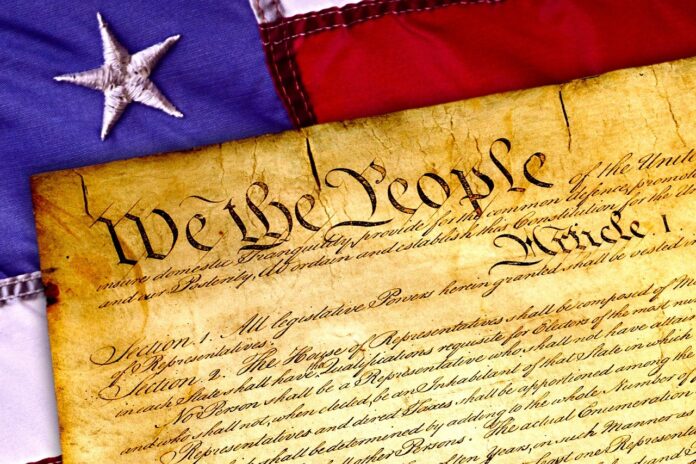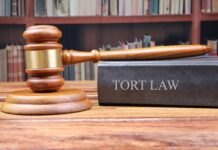This article is written by Ms. Sushree Surekha Choudhury from KIIT School of Law, Bhubaneswar. The article gives a detailed analysis of the Second Amendment to the US Constitution and how it is today.
It has been published by Rachit Garg.
Introduction
Everybody, at least once in their lives, wants to visit or buy a home in the USA, no? Those famous Manhattan lanes where everyone’s all-time favourite sitcom F.R.I.E.N.D.S was shot, or the famous Central Perk, or be it the dreamy Beverly Hills, every person at least once in his life wishes to witness the beauty of these places. When we think of this, we assume the states are completely safe and secure, right? If I told you that the civilians there own guns like some everyday commodity and they have this right guaranteed through their Constitution, would you not be a little scared? And to add to the scare, the government is restricted from regulating this or it would be treated as an infringement of people’s rights by the government. That is what the Second Amendment brought with it to the US Constitution.
In just this way, gun violence escalated in the US and, before anyone could realize it, the US became the country with the highest number of killings in gun violence, globally. In this article, we shall learn all about these gun laws and the constitutional right of people to “keep and bear arms” in detail. Before we move ahead, I have a question for you. Do you know what the current standing is on gun laws by the US government? Keep reading to find out.
The Second Amendment to the US Constitution : an insight
A brief history of the US Constitution
The US Constitution is the supreme law in the United States and binds the federal government, public officers, authorities, and people alike. Infringement of the Constitution is treated as agrievous offence and punishment is inflicted by the court. The US Constitution was drafted during the 17th century and was adopted on June 21, 1788, after it was ratified by 9 states. Other states demanded certain amends to be made to this Constitution before ratifying it. Hence, the Bill of Rights was introduced. The US Congress proposed 12 amendments through the Bill of Rights in 1789, of which 10 were ratified in 1791. These amendments were aimed at giving rights to US citizens and limiting the powers of the government in order to ensure non-arbitrariness.
The US Bill of Rights, 1791
Ratified and adopted on December 15, 1791, the Bill of Rights refined the US Constitution with a set of rights and restrictions on government in the form of 10 amendments to the US Constitution. The US Bill of Rights derived ideas from the Magna Carta (1215) and the English Bill of Rights (1689) in its provisions. Thus, the Bill of Rights brought the following amendments:
First Amendment
The First Amendment guarantees the following rights and freedoms:
- Freedom of speech and expression,
- Freedom to assemble, form groups, and demand their genuine rights through protests,
- Religious rights and freedoms, and
- Neutrality of the government in religious affairs.
Second Amendment
The Second Amendment allowed and gave people the right to “keep and bear arms.” The State under this Amendment gave the right to civilians to possess weapons, and the government was restricted from infringing on this right of citizens. We shall learn all about this amendment and the debates around it in this article.
Third Amendment
Soldiers in the states were previously allowed to take over civilians’ houses and stay there. The Third Amendment prohibited this provision and ruled that soldiers cannot force house owners to hand over their houses to soldiers.
Fourth Amendment
The Fourth Amendment restricts the right of the government and its departments to search and seize a civilian’s private property without a valid reason.
Fifth Amendment
The Fifth Amendment refined the rights of persons under trial. It stated that a grievous crime must be decided by a grand jury. It further prohibited double jeopardy. It stated that if a person’s property is acquired by the government, he must be compensated justly by the government before such acquisition. The Fifth Amendment also gives people the right to protection against self-incrimination. It established principles of fair trial and due process of law.
Sixth Amendment
The Sixth Amendment further adds to the list of rights guaranteed to people under trial. It guaranteed principles like speedy trials, publicly held trials, and a fair and impartial jury. The person under arrest or custody must be informed about the charges levied on him. The accused must have a fair chance of representing his case through a lawyer and with the help of witnesses.
Seventh Amendment
The Seventh Amendment allows jury trials in federal civil cases.
Eighth Amendment
The Eighth Amendment stabilized and limited the punishment inflicting system by putting bars and caps on the amount imposed as fines and prohibiting excessive punishment.
Ninth Amendment
The Ninth Amendment broadened the ambit of rights enjoyed by people. It made the Constitution inclusive. It stated that people can be guaranteed and given rights beyond the constitutionally guaranteed rights.
Tenth Amendment
The Tenth Amendment limited the powers of government by stating that the government shall enjoy powers and discretion only to the extent as it has been given by the US Constitution and not beyond.
The US Constitution Second Amendment Rights
In one instance, in 16th century England, Queen Elizabeth I constituted a national militia and required all the civilians to take part in it. This national militia aimed to defend the realm under all circumstances. Thus, civilians were needed to own and use weapons to defend the realm, and it would be lawful. The national militia failed in 16th century England, but the idea of owning and using weapons took shape into a political ideology.
The Second Amendment rights under the US Constitution give people the right to own and use arms. It states that this right is given keeping in mind the security of the state and the desire to have a “well-regulated militia.” It further stated that the rights given to people under this Amendment shall not be infringed by the government or its departments.
The Second Amendment to the US Constitution : an analysis
The Second Amendment of the US Constitution has always been highly debated. The Second Amendment gives a right to bear arms, but it also talks about giving this right for the purpose of protecting the security of the state. Thus, it is unclear whether the right is vested in people who can use it individually for their personal needs or for self-defence, or whether it is only protected by the amendment when the arms are used for the protection of the state.
Some believe that it is vested as a personal right, while others are of the opinion that the people can use these arms only when it is facilitated by militia. The debate has become crucial in the modern day as the dimensions of society have changed. Back in the 17th-18th century, the regulation seemed correct. The intent was to protect the state in desperate times of war. If a situation arose in a war where more and more weapons and people who could bear them were required, then the national militia consisting of civilians could participate in the war directly or give their arms to the militia so that it could fulfil war needs.
It was also an infamous notion and practice where the government used soldiers against the people of the country. Thus, the Second Amendment was also articulated with a belief that it would protect the citizens against this adversary. The government would train civilians for part-time military services and also pay them for rendering the services. These people were required to serve as militia only in certain specific circumstances, like foreign aggression, invasions, or other forms of emergencies. This was the idea behind forming the amendment and its provisions.
The power to raise militia in crucial times of war was vested in the federal US government. As power was shifted from the state to the government, the shift was opposed by anti-federalists. They stated that the shift was against the values of the newly proposed Constitution. They demanded that the new constitution should protect the rights of civilians against the powers of the government. The Federalists argued through the provisions of the Second Amendment that, under this amendment, the constitution shall protect people against the arbitrary powers of the government and rather protect civilians and restrict the government’s powers.
The federalists and anti-federalists shared a common consensus on the fact that the Second Amendment gave the federal government power and control over the military. They also agreed that the government should not have the right to restrict people from owning arms. With this common consensus, the Second Amendment of the Bill of Rights was ratified by the states.
But these provisions and arguments held true back in the 18th century. A lot has changed since then, and the initial intent behind the Second Amendment sounds absurd in the 21st century. For instance, the US army is well-refined and more advanced now than ever. It is one of the most efficient armies in the world and it uses advanced technologies and weaponry in its operations. The civilians are not needed by the army, nor are they suitable. The army is capable enough to handle its operations and would not ask civilians to join in wars. Also, ancient times saw frequent wars which led to the enactment of several laws that favoured the nations during wars. Times have changed and countries do not go to war, but rather settle disputes and differences with the help of the law.
Another basis of debate between federalists and anti-federalists was the balance of power between the government and civilians. This was at a time when people’s rights were limited. Not even the Constitution was adopted to guarantee their rights. Thus, the government’s tyranny was feared. People today have a wide range of rights, and there are ample provisions for remedy. The government’s infringements or wrongdoings against the people can be challenged in the courts and the people’s rights are upheld. Civilians today own arms only because they have a right to do so under the Second Amendment and not with the objective of participating in wars.
Legal developments and evolution of gun laws
The laws revolving around bearing arms and weapons have also changed and evolved over time. Earlier, the laws that allowed civilians to keep and bear weapons were different for Black people than for that White Americans. Black people were not allowed to own weapons and their movements were restricted. This has changed over time. Present laws give rights to Black people and Whites alike. Every American is allowed to own arms under the current laws.
Then came the Fourteenth Amendment to the US Constitution. The Second Amendment only regulates the bearing of arms by restricting the federal government’s ability to infringe on civilians’ rights. It did not specify anything about the state governments or give no specific guidelines as to how the state governments must act toward the citizens of their state bearing arms. The Fourteenth Amendment came with an Immunities Clause. It was believed that the Immunities Clause protected civilians’ right to bear arms from being infringed upon by the state government. However, the US Supreme Court in the case of United States v. Cruikshank (1875) clarified this confusion and stated that the Second Amendment of the Constitution only restricts the US Congress from infringing on the rights of civilians to keep and bear arms. It does not say anything about the state governments.
Landmark judgements on the Second Amendment
The Second Amendment of the US Constitution has evolved through several judicial precedents. Mentioned below are the noteworthy judgements that helped the law evolve and develop:
United States v. Miller (1939)
In the case of United States v. Miller (1939), the US Supreme Court ruled in favor of the National Firearms Act of 1934, which gave the US Congress the right to regulate and ban shotguns in specific places. This ruling was substantiated by the fact that the Second Amendment was made for the sole purpose of forming a well-regulated militia and shotguns would not be categorized as a weapon used for military purposes. Thus, the US Congress could regulate it.
District of Columbia v. Heller (2008)
Dimensions of society change over time. In 2008, the US Supreme Court gave an important decision on the Second Amendment. In District of Columbia v. Heller (2008), the Supreme Court invalidated the District of Columbia Code as it restricted people from possessing and owning handguns in Columbia. This was an instance where the Supreme Court intervened and restricted the action of a state government in relation to the civilians’ right to keep and bear arms. The Court further added that the right to own and bear arms is a personal right guaranteed under the Second Amendment to the US Constitution and that, under this provision, civilians can own arms even for their self-defense. They do not have to bear arms for the state or national militia. This judgment came with a 5:4 majority. However, the dissenting opinion was that civilians were given the right to bear arms with the intention of forming a well-regulated militia. There is no space for speculation about it as it has clearly been stated in the words of the Second Amendment. The law was never intended to allow civilians to own arms in self-defense. Further, even if it is assumed that civilians can bear arms for self-defense in the modern world, it nowhere restricts the states from regulating such possessions and restricting handguns in high-crime cities of the state. It is essential for the security of the state.
The divided opinion of the jury on the issue has been the exact reason for debate on the provisions of the amendment for years. Not only the lawmakers, governments, authorities, and the people but also the courts have been divided in opinions on the matter for years. The judgment, however, observed certain restrictions by banning the carrying of arms in certain places and by certain people. These are:
- Felons and mentally ill people were restricted from carrying firearms.
- Carrying firearms to certain places, like schools, government buildings, etc., was banned. These places were categorized as “sensitive places”.
- The commercial sale of arms was banned.
- Arms and weapons carried by people who would not be regarded as ‘law-abiding civilians’ were banned.
- Concealed carrying of arms was banned and punished if found.
McDonald v. City of Chicago (2010)
In a 2010 judgment in McDonald v. City of Chicago, the Supreme Court invalidated a handgun ban in Chicago by a 5:4 majority. The question of law to be decided was whether or not the Second Amendment is applicable to state governments as it is to the federal government. The majority ruling established that the Second Amendment is applicable to state governments just as the federal government under the Due Process Clause of the Fourteenth Amendment. The dissenting opinion was that it did not apply to the state governments under the Immunities Clause of the Fourteenth Amendment. It was further reiterated that civilians could own and bear arms for self-defense.
Caetano v. Massachusetts (2016)
With certain developments and certain debates, the law continues to receive mixed opinions and decisions. In Caetano v. Massachusetts (2016), the US Supreme Court invalidated the Massachusetts statute that banned stun guns. The Court stated that stun guns fall into the ambit of the Second Amendment, and thus, their possession cannot be regulated or prohibited by state laws.
New York State Rifle and Pistol Association v. Bruen (2022)
A New York law made regulations for the purchase of handguns in Bruen. It required people wanting to purchase handguns to first obtain a license to do so. Only when qualified by obtaining the license, could they make legal purchases. This was in reference to allowing civilians to carry guns and arms outside of their houses for the purpose of self-defense. The words of the regulations were such that they vested discretion in the state government to allow or deny the license. This regulation was struck down by the US Supreme Court for being invalid as it was infringing the Second Amendment in the case of New York State Rifle and Pistol Association v. Bruen (2022).
Thus, the general understanding until this recent judgment is that the Second Amendment protects the rights of civilians to own and bear guns lawfully for their self-defense and that the state does not have the right to restrict such keeping. It clarifies the provisions to be as follows:
- Civilians can keep and bear arms in self-defense.
- Firearms could be used by civilians for lawful purposes.
- Firearms must be lawfully obtained and possessed by people.
- These people must not come under the restricted category of felons and mentally ill people.
- If all these essentials are met, neither the federal government nor the state governments shall restrict civilians from owning guns and other weapons.
The recent controversy about gun violence in the US
Countries around the world have always made strict laws and restrictions on the subject of gun control. While these countries have made efforts to restrict or ban the use of guns by civilians, the US has taken a different stand altogether by guaranteeing it as a constitutional right. Over the years, this has been a reason not only for debate but also for increased violence. The times were different when the US Constitution recognized the right of citizens to bear arms as a constitutional right. It was during this time when wars were frequent and countries had to make efforts to give priority to military forces in order to ensure the safety and security of the nation. But with the changing times, the right became a promoter of self-defense. People were given the right to own and use guns and weapons in self-defense.
This has also given rise to violence in the state. Murders and homicides by firearms and guns have become so high that the US has the highest number of killings by firearms among developed nations. Yet, the government was silent for all these years about gun control regulations in the US because the opinions have always been divergent. Supporters of owning arms believe that if the state restricts people from owning guns, it would lead to increased crimes and restrict law-abiding citizens from defending themselves. It will render them defenseless. Whereas, opposers believe that not regulating gun laws in the US has led to an increased number of crimes and that making laws to control them will save many lives.
While gun violence occurs almost every day in the US, many cases go unreported because of this high frequency. The ones that become extremely heinous and cause mass killings get reported. In one such incident in 2012, 20 children and 6 adults in an elementary school in Newtown, Connecticut were murdered by gun violence. Another instance took place in 2016 when 49 people were killed in an Orlando nightclub.
Two massively worse incidents of all time took place recently in March 2022, one in Atlanta and another in Colorado. On March 22, 2022, an open fire took place in a grocery store in which 10 people were killed, including a police officer. Before this, another incident took place on March 16th in Atlanta, where 8 people were killed by a man in three different spa locations. Six of them were Asian women. These two incidents ignited people all over the US, and people started campaigning and demanding better laws in the US.
There have been 300 mass shootings and about 19, 000 deaths due to gun violence so far in 2022. More than 45,000 cases of injury or death are reported every year. Not just killings but also the number of homicides are increasing in the US. Most of the suicides in the US are committed using personal guns and arms. The purchase of guns has rapidly increased during the COVID-19 pandemic. 2021-22 saw a record high of 43 million guns sold. These purchases are not properly regulated, which is why murderers and felons alike are getting access to weapons in the US. The Covid-19 pandemic took a toll on people’s mental health and emotional well-being. Handling emotions like fear, anger, grief, and many others has made people vulnerable and prone to violence. Many people have turned suicidal and many others have turned criminals. This has further increased violence, and since purchasing guns is constitutionally protected in the US, people can resort to violence with ease. Present-day statistics show that 400 million guns are owned by civilians in the US. This is even more than the country’s population! This has definitely turned into a cause of concern.
The Americans have shown retaliation and mixed opinions on the matter. While some have resorted to the opinion that guns should be controlled by the state entirely, others still believe that it is a constitutional right for a reason and law-abiding citizens must not be restrained from owning weapons for self-defense. With that view, Americans have argued that the states should be allowed to regulate the selling and use of guns and arms with a set of laws and regulations. The recent incident was all over social media where people became outspoken on the issue and shared their points of view. Even celebrities, business tycoons, etc., spoke on the issue. Polls were raised to secure public voting to understand what changes the majority of the populace wished.
Many Americans believe that while people must be allowed to own arms, the state must impose stricter regulations to control and manage weaponry in the public interest. They demanded safety regulations that would require a thorough background check of a person wanting to purchase weapons, prescribe a certain waiting period before handing over weapons to buyers, and require permits to be obtained after a thorough check to ensure the morale of a person and determine if he is fit and safe to own guns. Even after taking these precautions and safety measures, the person who buys a gun must be given minimum training on the proper usage of guns and should also be made aware of the laws and regulations guarding the same. Assault weapons and high-risk weapons should not be sold or owned by civilians.
The Gun Control Bill (2022)
Following these incidents and people’s demands for change, the US government passed the historic Gun Control Bill after decades of struggle and debate. While the success of the bill will be determined with the passage of time, it made the following regulations in the US:
- It imposed a stricter checking policy and procedure before allowing a person to purchase weapons, especially for people below 21 years of age.
- It vested power in the designated authorities to take away weapons from a person who posed a potential threat.
- The US government further invested $15 billion in increasing security in schools and also in conducting mental health campaigns and programs.
- The US government, through this Bill, insists state governments implement “red flag laws.” These are laws that would keep a record of people who could be a potential threat to the security of people and the country and take appropriate measures regarding the same.
- It further banned people, married or unmarried, who have had records of being abusive or committing domestic abuse from owning guns.
Conclusion
The US has covered a long journey in terms of its gun control laws. From the beginning with giving people the right to own arms to participate in wars to using them for self-defense, from giving complete freedom to own and use guns to creating regulations governing it, and from the war age to the modern day. Queen Elizabeth I, during her rule in England, raised a national militia in the situation of emergency. This ideology was adopted in the US through the Second Amendment. However, times changed, and although it took decades to come to this point, the US government has finally taken affirmative actions to regulate guns and violence using them in the states. The reason why it took so long for a change to come is also the extremely divided opinions of not only people but also experts, lawmakers, and senators on the issue. For decades, there have been people supporting the absolute constitutional right of gun ownership by civilians, and there have also been people condemning it, who urged and focused on the importance of regulating the right with reasonable restrictions and scrutiny. Thus, the debate and unsettling mixed opinions stopped the government from making laws as well. It took time and sacrifices for this day to come. Now that President Joe Biden has signed the Gun Control Bill into law, positive changes are expected to come. Time will tell us better.
Frequently Asked Questions (FAQs)
What was the primary intent of the Second Amendment to the US Constitution and how has its interpretation changed over time?
The Second Amendment was introduced into the US Constitution with the intent to formulate a “well-regulated militia.” This was done during times of war when the US army anticipated the need to involve civilians in defending the state. However, with changing times and societal dimensions, the Second Amendment came to be interpreted as a constitutional right guaranteed to the people of America which allows them to use guns and arms in self-defense.
Are gun laws regarded as unconstitutional?
No, the gun laws and regulations are not unconstitutional. Although the Second Amendment primarily forbade the federal government from regulating guns and arms as it is a constitutional right of people to keep arms, society has evolved through judicial precedent and legislative reforms that now allow the construction of safety regulations and gun laws in the public interest.
If state gun laws are in conflict with federal laws, which one shall prevail?
Article VI of the US Constitution speaks about the Supremacy Clause. Under this clause, federal laws shall prevail over state-made laws in cases of conflict, and the states must abide by the federal laws and formulate state laws and regulations accordingly.
How many times has the Second Amendment changed over the years?
Over the years, 230 to be precise, the Second Amendment to the US Constitution has been amended 17 times to be at par with the changing needs and evolution of society. It is due to these amendments that the laws continue to be relevant to societal needs.
References
- https://www.law.cornell.edu/wex/second_amendment
- https://constitution.congress.gov/constitution/amendment-2/
- https://constitutioncenter.org/interactive-constitution/interpretation/amendment-ii/interps/99
- https://constitution.findlaw.com/amendment2.html
- https://www.nraila.org/what-is-the-second-amendment-and-how-is-it-defined/
- https://indianexpress.com/article/research/mass-shootings-in-us-the-history-of-americas-second-amendment-7963838/
- https://indianexpress.com/article/explained/explained-debate-around-gun-control-laws-in-us-bidens-stand-on-them-7245117/
- https://www.cfr.org/backgrounder/us-gun-policy-global-comparisons
Students of Lawsikho courses regularly produce writing assignments and work on practical exercises as a part of their coursework and develop themselves in real-life practical skills.
LawSikho has created a telegram group for exchanging legal knowledge, referrals, and various opportunities. You can click on this link and join:
Follow us on Instagram and subscribe to our YouTube channel for more amazing legal content.








